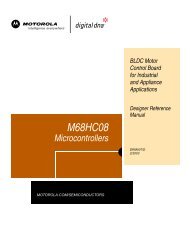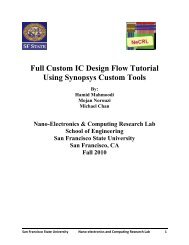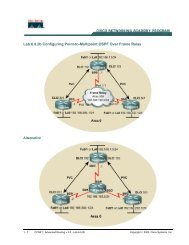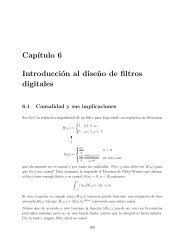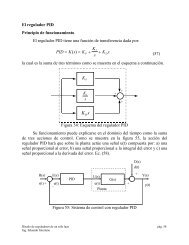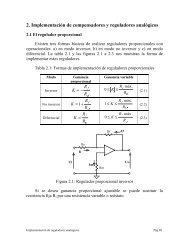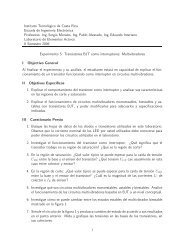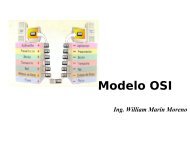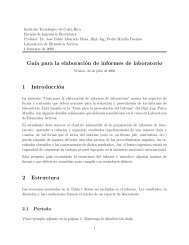Xilinx UG393 Spartan-6 FPGA PCB Design Guide
Xilinx UG393 Spartan-6 FPGA PCB Design Guide
Xilinx UG393 Spartan-6 FPGA PCB Design Guide
You also want an ePaper? Increase the reach of your titles
YUMPU automatically turns print PDFs into web optimized ePapers that Google loves.
Chapter 2: Power Distribution System<br />
Unconnected V CCO Pins<br />
Simulation Methods<br />
In some cases, one or more I/O banks in an <strong>FPGA</strong> are not used (for example, when an<br />
<strong>FPGA</strong> has far more I/O pins than the design requires). In these cases, it might be desirable<br />
to leave the bank’s associated V CCO pins unconnected, as it can free up some <strong>PCB</strong> layout<br />
constraints (less voiding of power and ground planes from via antipads, less obstacles to<br />
signals entering and exiting the pinout array, more copper area available for other<br />
planelets in the otherwise used plane layer).<br />
Leaving the V CCO pins of unused I/O banks floating reduces the level of ESD protection<br />
on these pins and the I/O pins in the bank. ESD events at the unconnected solder balls in<br />
the inner rows of a BGA pinout array are unlikely and not considered a high risk.<br />
However, ESD events at exposed pins on the perimeter of a QFP-type package are likely.<br />
In these packages, the V CCO pins of unused I/O banks should be connected to the V CCO of<br />
a neighboring I/O bank.<br />
Simulation methods, ranging from very simple to very complex, exist to predict the PDS<br />
characteristics. An accurate simulation result is difficult to achieve without using a fairly<br />
sophisticated simulator and taking a significant amount of time.<br />
Basic lumped RLC simulation is one of the simplest simulation methods. Though it does<br />
not account for the distributed behavior of a PDS, it is a useful tool for selecting and<br />
verifying that combinations of decoupling capacitor values will not lead to large antiresonances.<br />
Lumped RLC simulation is performed either in a version of SPICE or other circuit<br />
simulator, or by using a mathematical tool like MathCAD or Microsoft Excel. Istvan Novak<br />
publishes a free Excel spreadsheet for lumped RLC impedance calculation (among other<br />
useful tools for PDS simulation) on his website:<br />
http://www.electrical-integrity.com<br />
Table 2-4 also lists a few EDA tool vendors for PDS design and simulation. These tools<br />
span a wide range of sophistication levels.<br />
Table 2-4:<br />
EDA Tools for PDS <strong>Design</strong> and Simulation<br />
Tool Vendor Website URL<br />
ADS Agilent http://www.agilent.com<br />
SIwave, HFSS Ansoft http://www.ansoft.com<br />
Specctraquest Power Integrity Cadence http://www.cadence.com<br />
Speed 2000, PowerSI, PowerDC,<br />
OptimizePI<br />
Sigrity<br />
http://www.sigrity.com<br />
Hyperlynx PI Mentor http://www.mentor.com<br />
32 www.xilinx.com <strong>Spartan</strong>-6 <strong>FPGA</strong> <strong>PCB</strong> <strong>Design</strong> and Pin Planning<br />
<strong>UG393</strong> (v1.1) April 29, 2010



